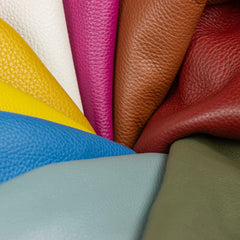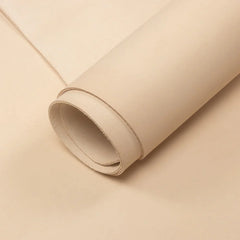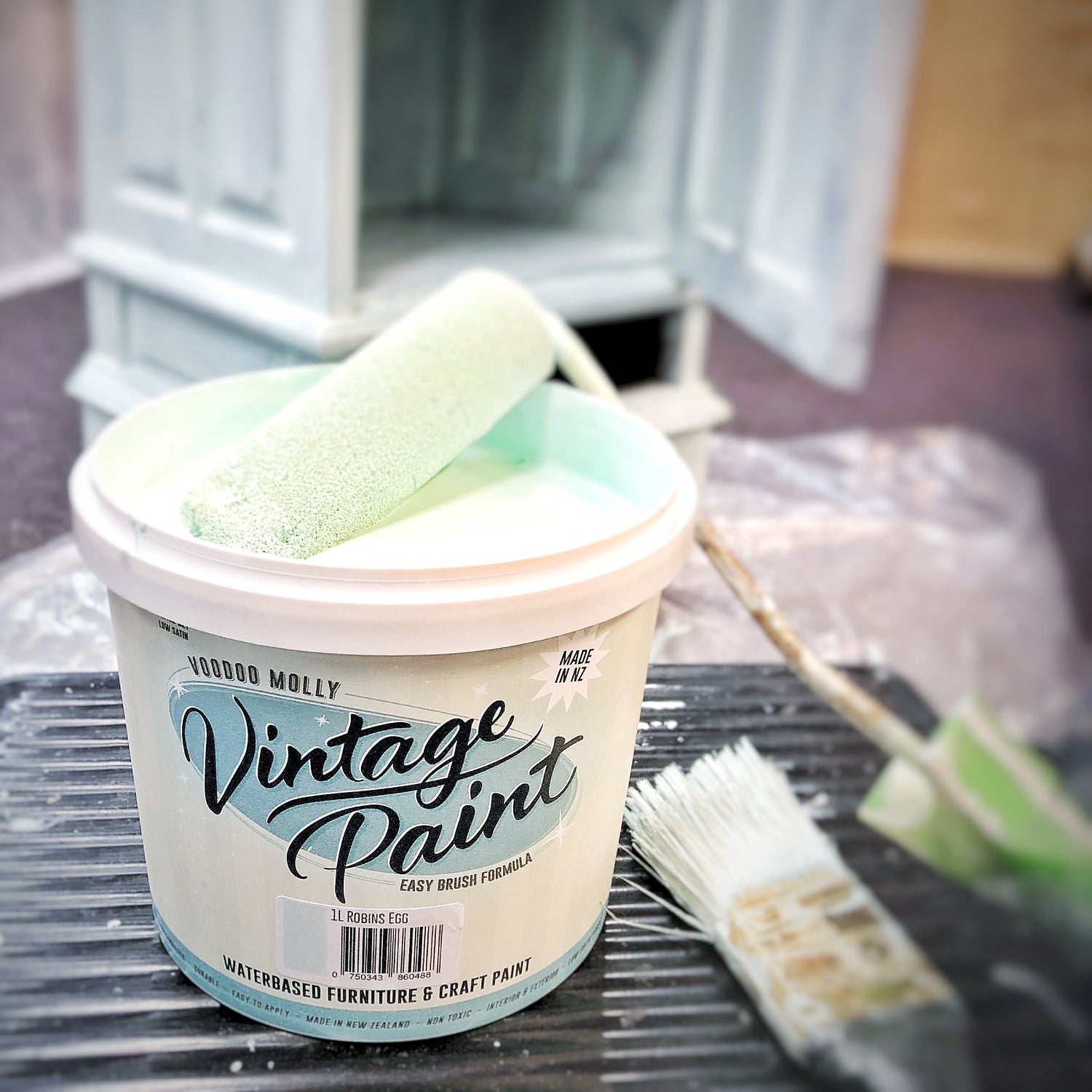Leather, with its timeless appeal and versatility, has been a staple material in various industries and crafts. Two primary methods used in the tanning process, chrome tanning and vegetable tanning, yield distinct types of leather. Let's explore the differences between chrome tan leather and veg tan leather, including their respective benefits and uses, shedding light on their unique characteristics and applications.

Chrome tanning, introduced in the mid-19th century, revolutionised the leather industry with its efficient and rapid process. It involves the use of chromium salts, predominantly chromium sulfate, to treat the animal hides. The chromium salts penetrate the hides, binding with the collagen fibres, resulting in a soft and supple leather that retains its shape well. Chrome tan leather possesses several notable characteristics:
- Softness and Pliability: Chrome tanned leather is renowned for its immediate softness and flexibility. It requires minimal breaking-in time, making it comfortable for various applications, including footwear, garments, and upholstery.
- Water Resistance: The chromium salts used in chrome tanning impart water-resistant properties to the leather, making it less susceptible to water damage. This characteristic is advantageous for products that may be exposed to moisture, such as bags, wallets, and watch straps.
- Diverse Range of Colors and Finishes: Chrome tan leather offers a vast array of colors and finishes due to the extensive availability of synthetic dyes and finishes. This versatility allows for the creation of vibrant and unique leather products.
- Cost and Availability: Chrome tan leather is generally more affordable and readily available compared to veg tan leather. Its efficient production process and widespread use in the industry contribute to its accessibility.
- Common uses:
- Footwear: Chrome tanned leather is widely used in the production of footwear due to its softness, pliability, and water-resistant properties. It is commonly found in shoes, boots, and sneakers, providing comfort, durability, and protection against the elements.
- Upholstery and Furniture: The supple nature of chrome tanned leather makes it a popular choice for upholstery and furniture applications. Sofas, chairs, car interiors, and other seating surfaces often utilise chrome tanned leather for its luxurious feel and resistance to wear and tear.
- Bags and Accessories: Chrome tanned leather is extensively used in the manufacturing of bags, wallets, and accessories. Its water resistance, wide color range, and availability of finishes make it suitable for creating fashionable, durable, and functional items like handbags, briefcases, backpacks, and belts.
- Garments: The soft and pliable nature of chrome tanned leather lends itself well to the production of garments such as jackets, coats, and skirts. Its ability to drape and conform to the body offers both style and comfort.

Vegetable tanning, a traditional method dating back centuries, employs natural tannins derived from plant sources, such as tree barks and fruits, to treat animal hides. This slow and labor-intensive process results in distinctive leather with its own set of characteristics:
- Durability and Stiffness: Veg tan leather is renowned for its remarkable durability and stiffness. It possesses a firm structure that holds its shape well over time, making it suitable for products requiring structural integrity, such as belts, saddles, and leather goods with intricate tooling.
- Aging and Patina: Unlike chrome tan leather, veg tan leather has a natural ability to develop a rich patina over time. It absorbs oils, darkens with age, and displays unique markings, enhancing its character and appeal. This aging process adds value and charm to products crafted from veg tan leather.
- Environmental Considerations: Vegetable tanning utilises natural tannins derived from renewable plant sources, making it a more environmentally friendly option compared to chrome tanning, which relies on synthetic chemicals. The process has minimal impact on the ecosystem and offers a sustainable choice for eco-conscious consumers.
- Customisation and Craftsmanship: Veg tan leather is highly favoured by artisans and craftsmen due to its workability and responsiveness to various techniques. It readily accepts wet moulding, tooling, carving, and dyeing, allowing for intricate and personalised designs.
- Common uses:
- Belts and Straps: Veg tanned leather's durability and stiffness make it an excellent choice for belts, watch straps, guitar straps, and other items requiring strength and structural integrity. Its ability to age beautifully and develop a unique patina adds to the appeal of these accessories.
- Saddlery and Equestrian Goods: Veg tanned leather has a long history in saddlery and equestrian products. Horse saddles, bridles, reins, and other horse-related equipment benefit from the durability and ruggedness of veg tanned leather, ensuring longevity and performance.
- Carving and Tooling Crafts: Veg tanned leather's responsiveness to carving and tooling techniques makes it a favourite among leather craftsmen. It is commonly used in the creation of intricately designed and personalised products such as wallets, journals, sheaths, and keychains.
- Artisan Leather Goods: Veg tanned leather is highly sought after by artisans and craftsmen for its workability and ability to showcase meticulous craftsmanship. It is utilised in the production of hand-stitched leather goods, including wallets, bags, briefcases, and small leather accessories.
Chrome tan leather and veg tan leather differ significantly in their production methods, characteristics, and applications. Chrome tan leather boasts immediate softness, water resistance, and a diverse range of colors, making it ideal for various consumer goods. On the other hand, veg tan leather excels in durability, aging potential, environmental considerations, and the ability to showcase artisanal craftsmanship. Both types of leather have their unique benefits and uses, catering to different industries and consumer preferences. Understanding their distinctions empowers individuals to make informed decisions when selecting leather products or embarking on leather crafting endeavours.


